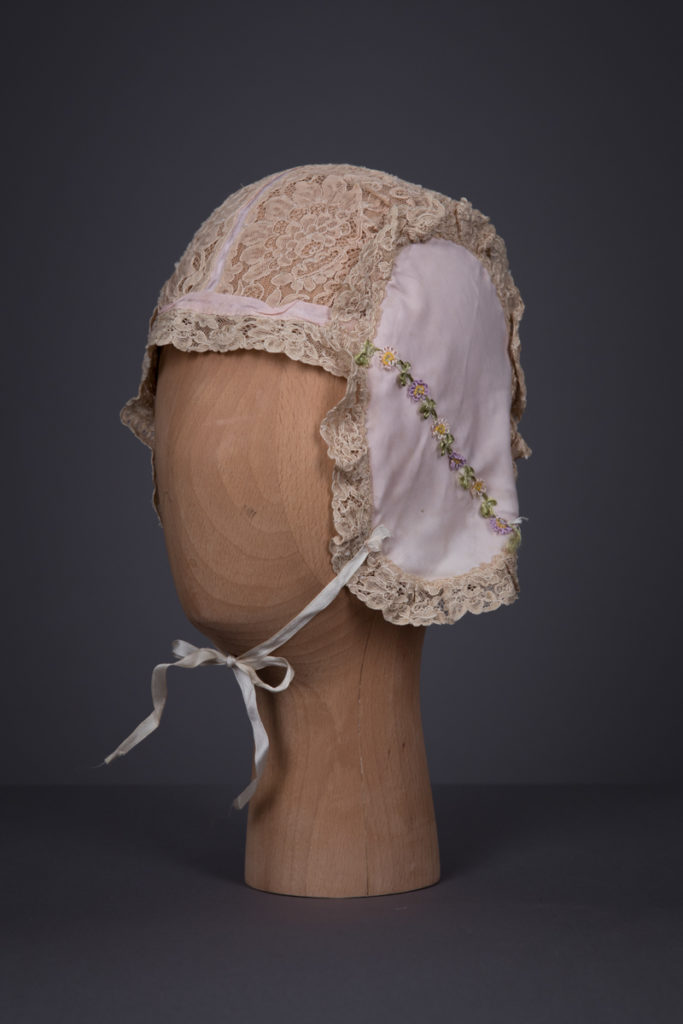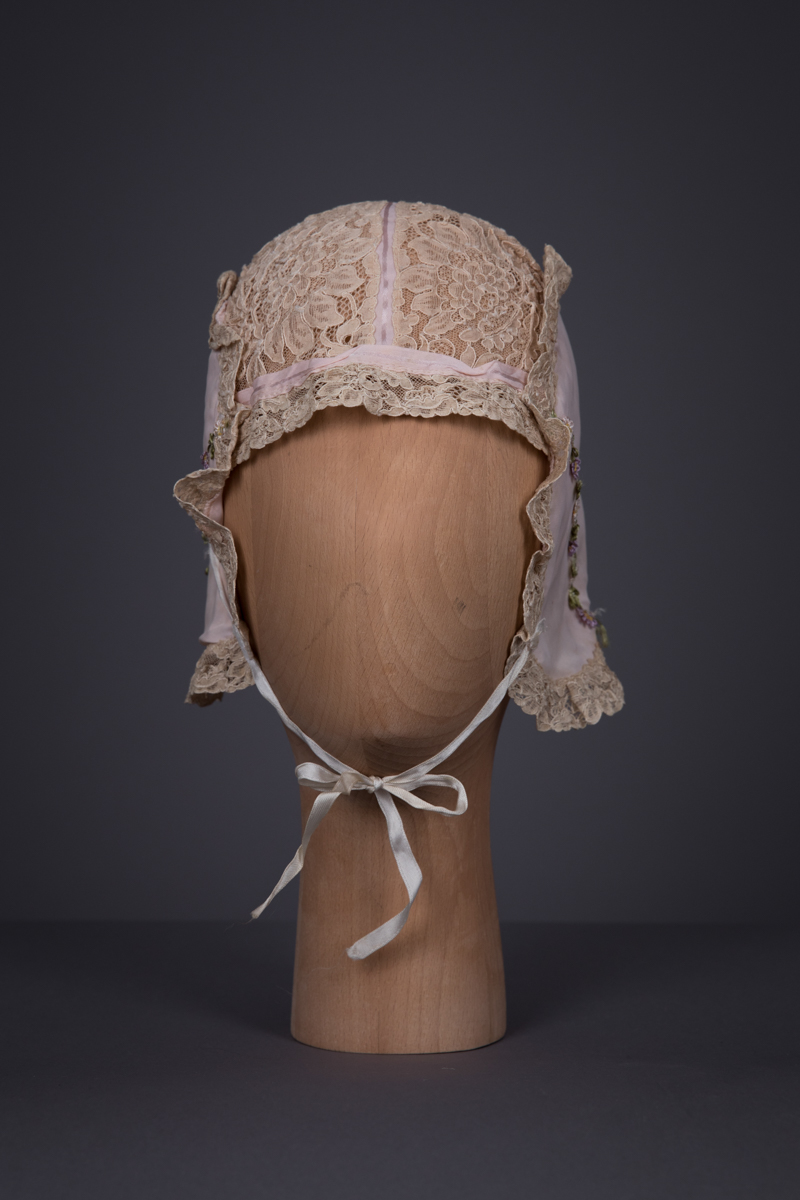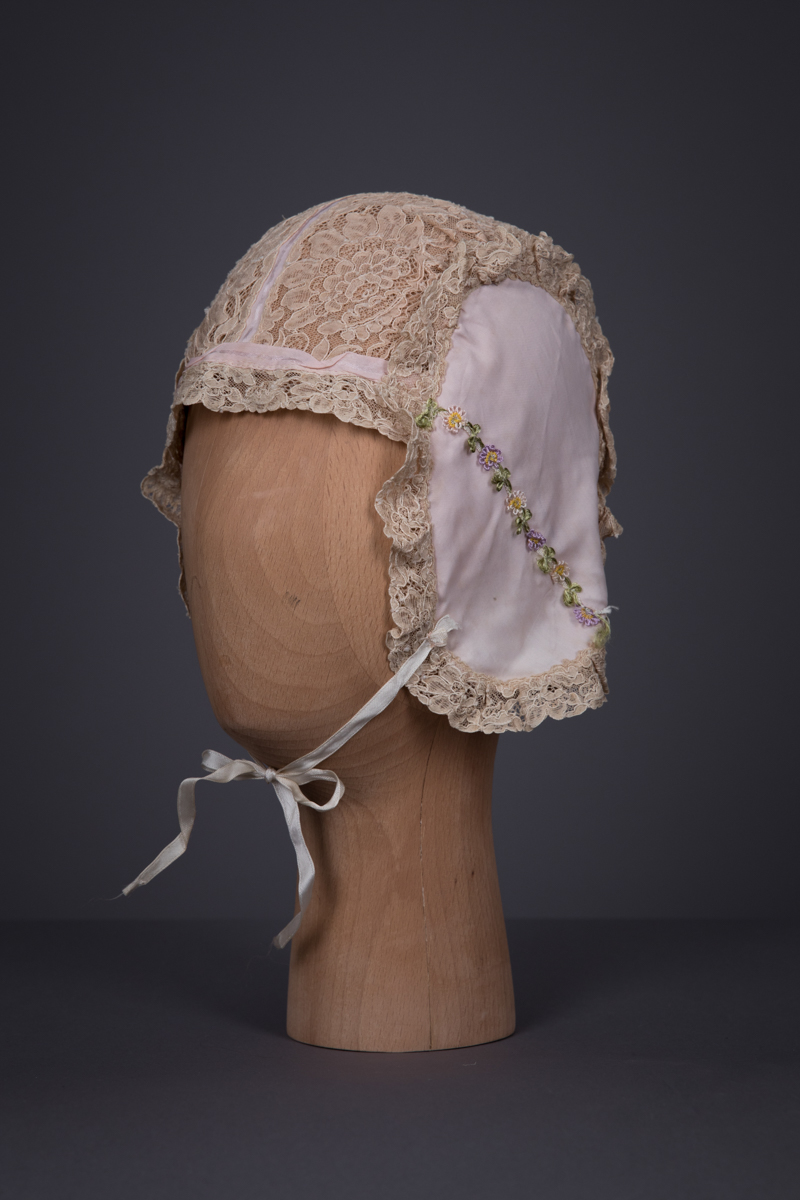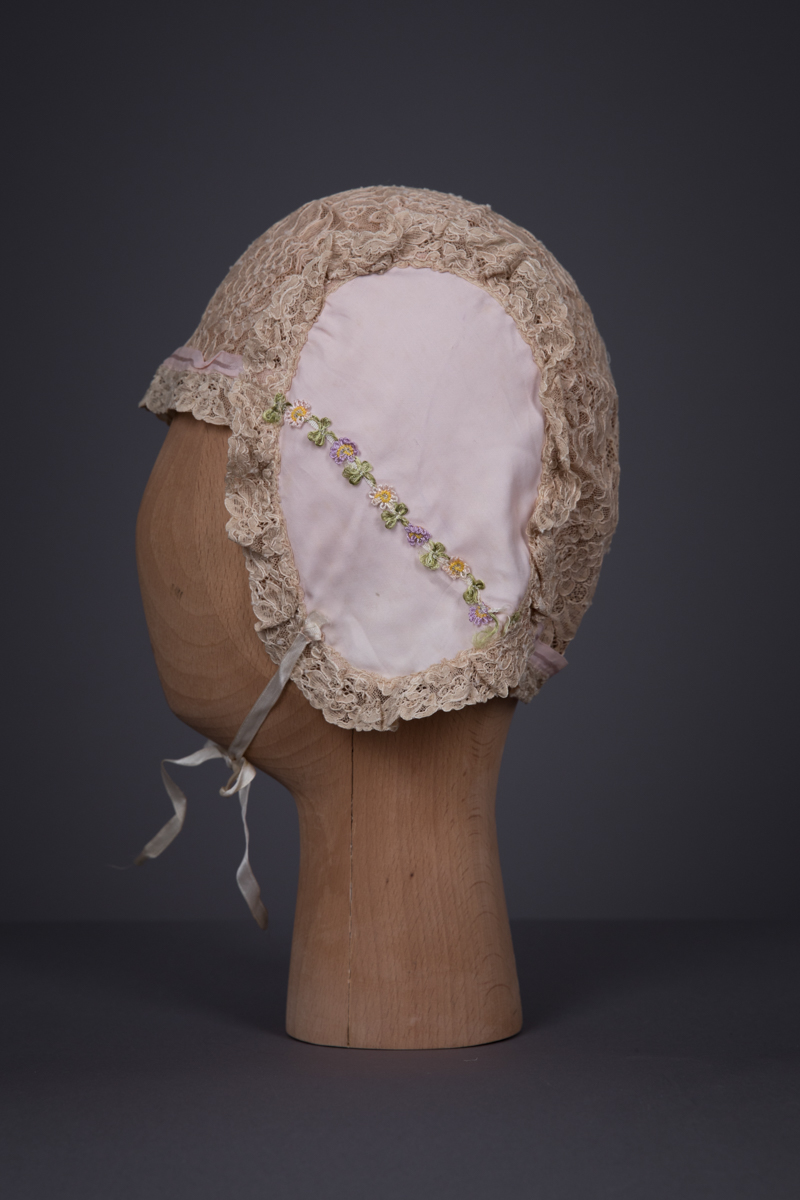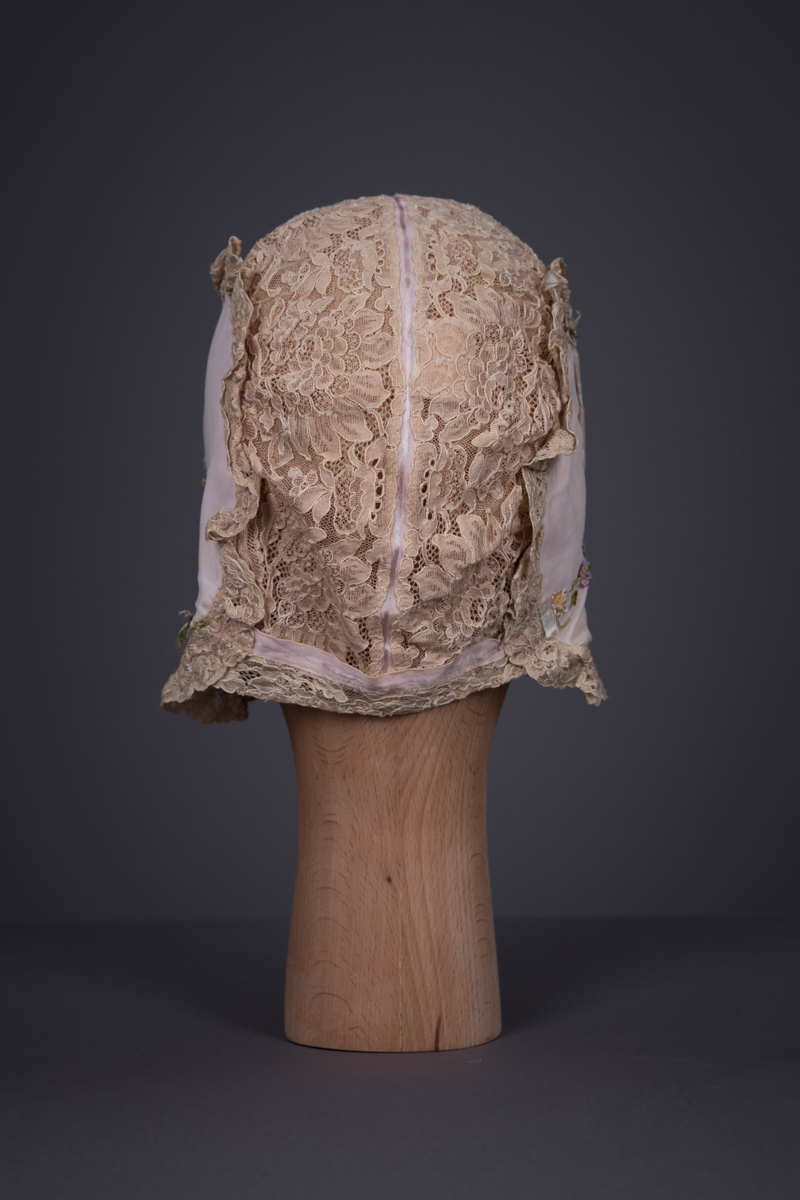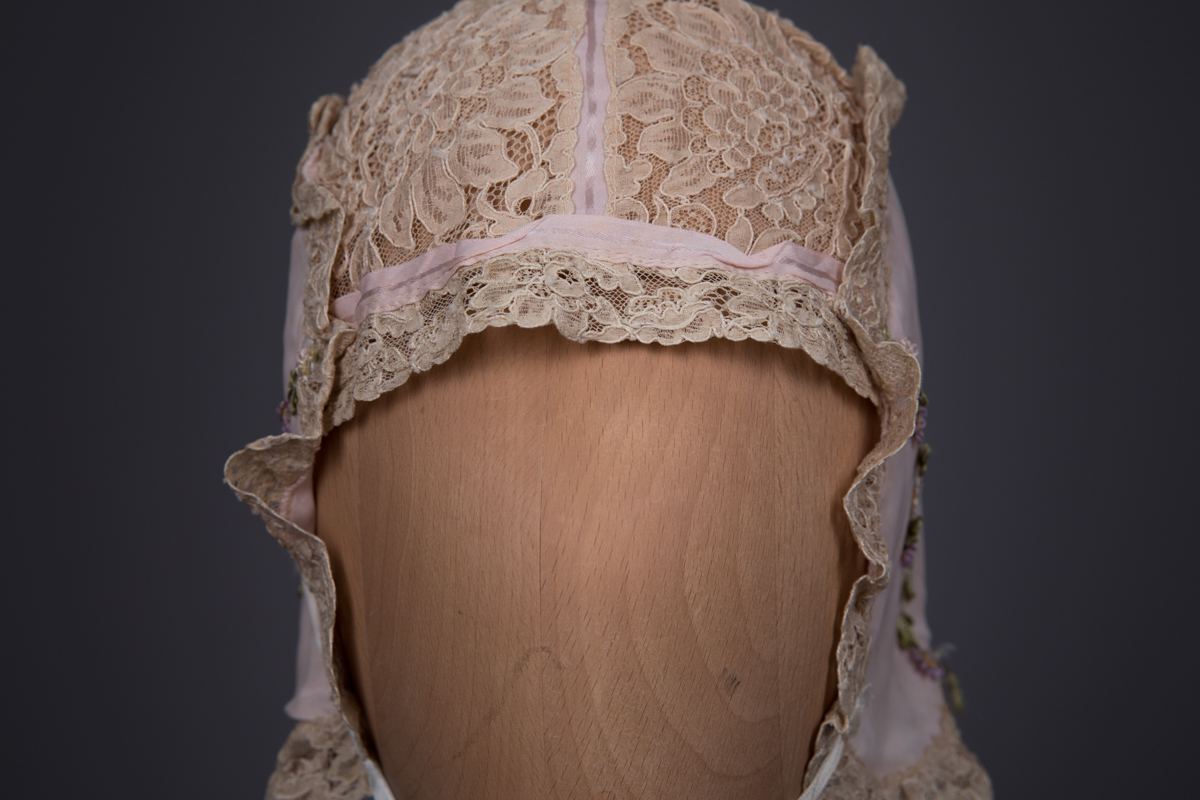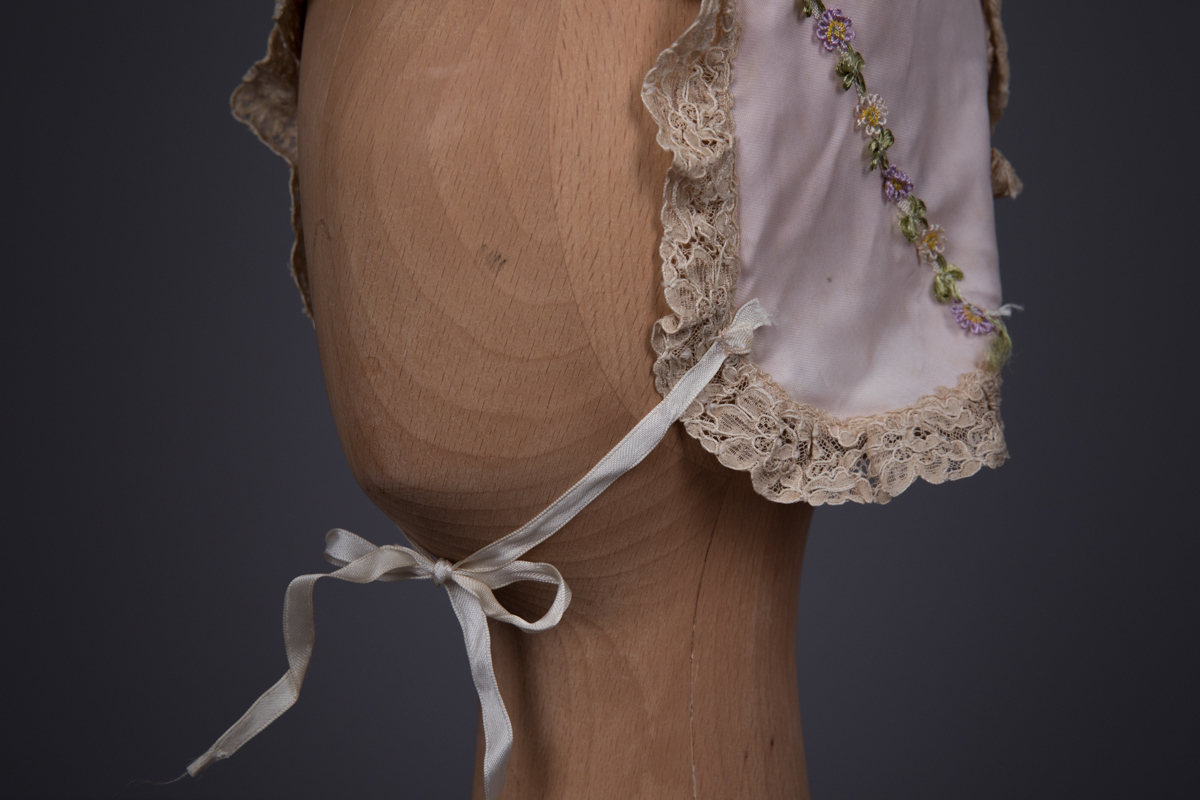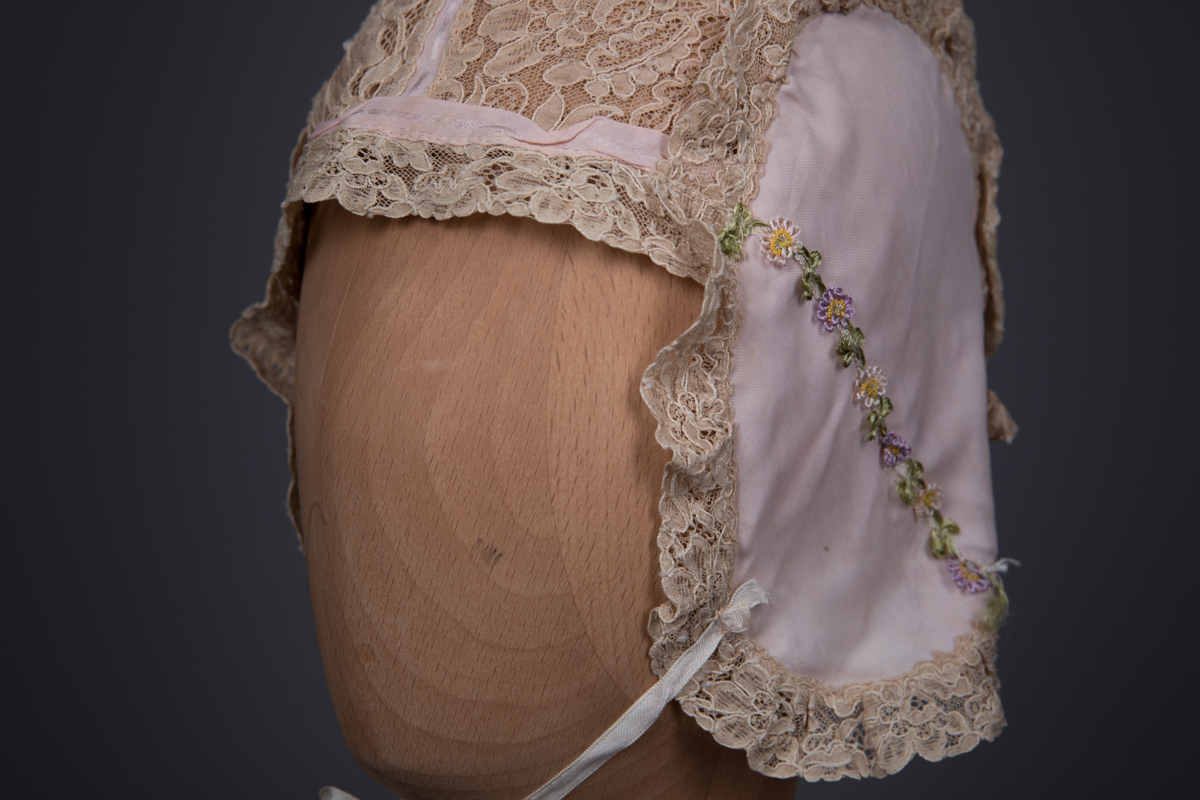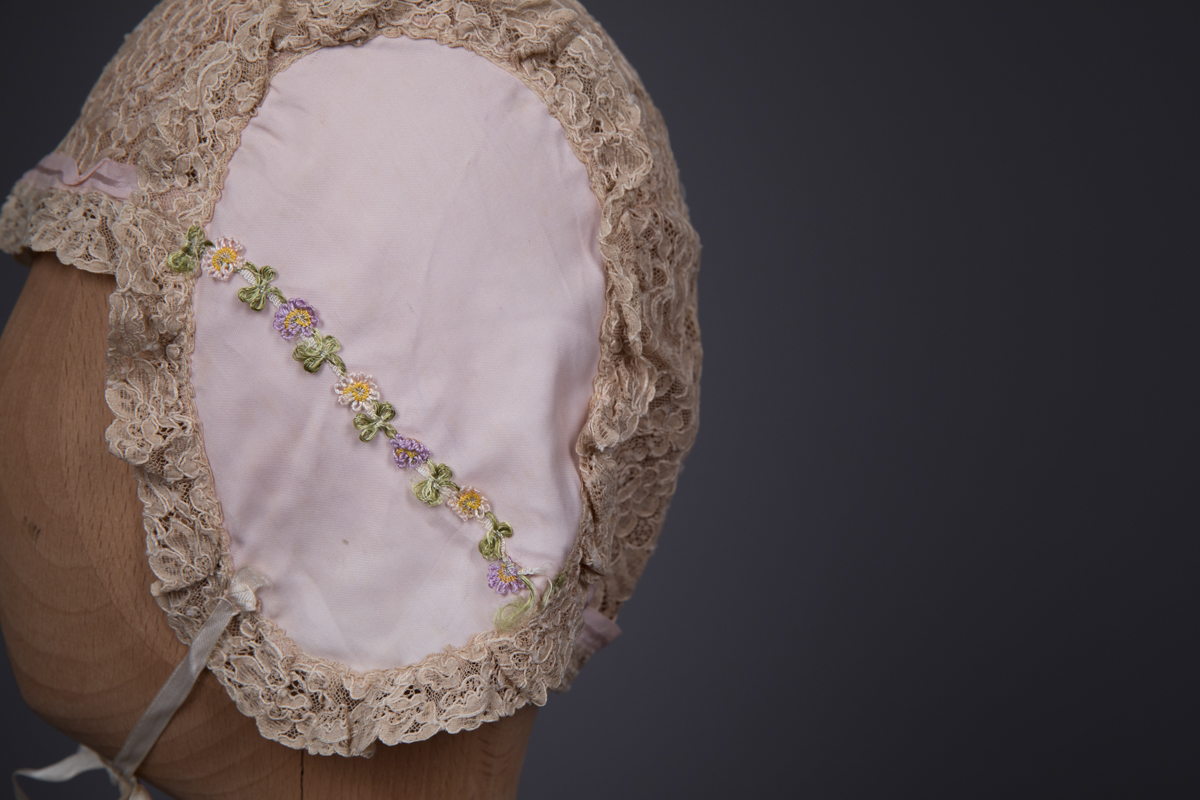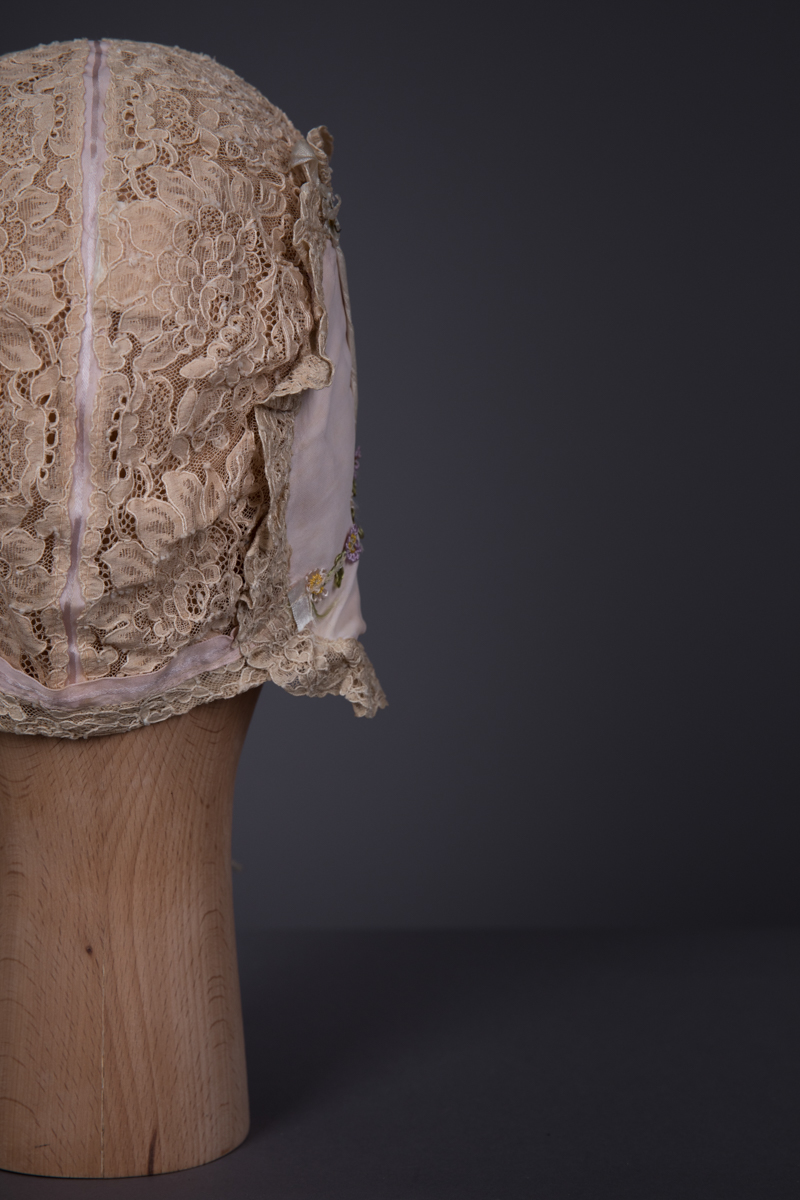Date: c. 1930s
Origin: Great Britain
Fabric: Celanese Rayon
Brand: Unknown
A boudoir cap made of fine machine lace and pale pink ‘celanese’, a type of branded rayon produced by the company British Celanese (the name comes from a contraction of ‘celluloid’ and ‘ease’; rayon is a cellulose based fibre). Celanese was marketed as an affordable and easy to care for alternative to silk. The boudoir cap is embellished with satin ribbon trims and silk ribbonwork rosettes.
The boudoir cap is a type of lingerie headwear, most commonly worn during the nineteenth to early twentieth centuries. It was originally worn over undressed hair, worn in the privacy of the boudoir alongside nightwear. In the 1910s and 1920s, it would be commonly worn to protect shorter hair styles during sleep. As the designs became more and more elaborate towards the 1930s, it began to be considered more of a decorative hair net. Like other forms of lingerie, boudoir caps were usually made in fine fabrics such as lace, tulle and satin. Embellishment was often profuse, with techniques such as ribbonwork being particularly commonplace.
From the collection of Karolina Laskowska
